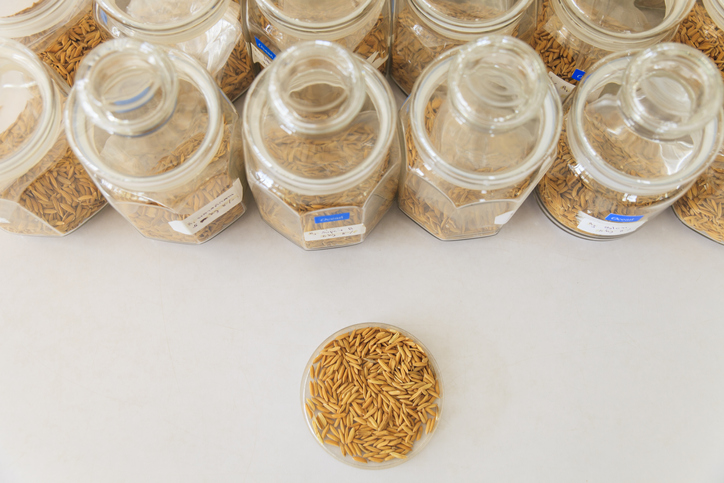
Rice Scientists Use CRISPR-Cas9 to Develop High-yielding Semi-dwarf Rice Lines
December 18, 2019| |
Scientists from China National Rice Research Institute used CRISPR-Cas9 to edit Semi-Dwarf1 (SD1) in elite Chinese rice varieties, which has several desired agronomic traits. The results are published in Scientific Reports.
Expanding genetic diversity among rice varieties is vital to prevent genetic erosion or loss of genetic variation in a crop. Thus, the researchers edited SD1 in the elite landraces Kasalath and TeTePu, which contain many desired agronomic traits such as tolerance to low phosphorous and broad-spectrum resistance to several diseases and insects. Mutations of SD1 led to shorter plant height for better resistance to lodging. Field trials showed that the yield of the mutant lines was improved compared to the wild-type progenitors, while maintaining the desirable agronomic characteristics.
Based on the findings, the researchers concluded that breeding using available landraces together with genome editing techniques can prevent genetic erosion in modern rice varieties.
Download the research article in Nature.
| |
You might also like:
- Inducible CRISPR-Cas9 Improves the Precision of Genome Editing in Rice
- Tungro-Resistant Rice Developed through CRISPR-Cas9
- Pocket K No. 54: Plant Breeding Innovation: CRISPR-Cas9
Biotech Updates is a weekly newsletter of ISAAA, a not-for-profit organization. It is distributed for free to over 22,000 subscribers worldwide to inform them about the key developments in biosciences, especially in biotechnology. Your support will help us in our mission to feed the world with knowledge. You can help by donating as little as $10.
-
See more articles:
-
News from Around the World
- Nigeria Commercializes Pod Borer Resistant Cowpea, its First GM Food Crop
- Scientists Discover Corn Gene for Abundant Kernels
- Bt Eggplant Can Boost Marketable Yield by 192% in PH
- Philippines Approves Golden Rice for Direct Use as Food and Feed, or for Processing
- Agri-biotech Vital for Future Food Security, Pakistan S&T Minister Declares
- Rothamsted Research Study Finds European Wheat Can Yield Far More Than Current Production
- Research Team Discovers Genes Driving Plant Architecture
-
Research Highlights
- New Eco-friendly Protein Antibiotics Fight Off Crop Diseases
-
Plant
- New Methods Promise to Speed Up Development of New Plant Varieties
- Rice Scientists Use CRISPR-Cas9 to Develop High-yielding Semi-dwarf Rice Lines
-
Read the latest: - Biotech Updates (November 12, 2025)
- Gene Editing Supplement (October 29, 2025)
- Gene Drive Supplement (February 22, 2023)
-
Subscribe to BU: - Share
- Tweet

